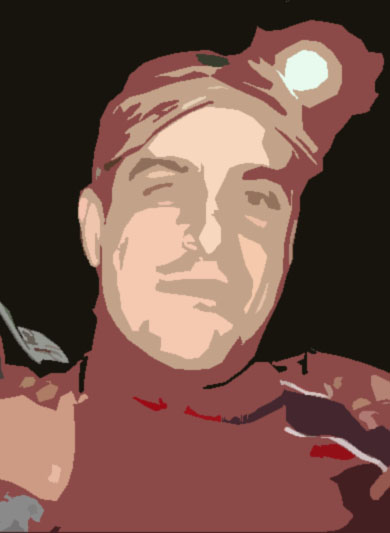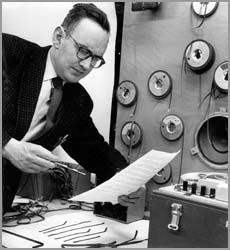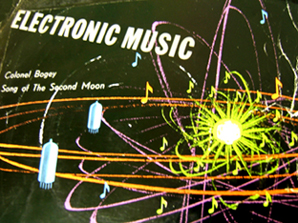
2008: A special year, considering the status quo
Versão 3.0 (e última) da escolha (pessoal, é claro) das melhores faixas de 2008. Feliz 2009
As part of the R&S Records team and after a deep research, I had the opportunity to listen to awesome tracks from 2008 that I’d like to share with you. Enjoy (some of them are not released yet, unfortunately – but will soon). (I just made a final edition and included a couple of tracks that just couldn’t stay out!) – Alain Patrick
Autechre – Altibzz – WARP – A very intimate, multiple chords of ethereal timbres. Emotional, deep.Whoever said that Autechre couldn’t bring awesome art again was wrong.
Bochum Welt – 8221SB – Rephlex – How could I leave outside this track from Gianluigi Di Constanzo’s 08 album? Listen and you will feel like inside a ship on the deep space………….
Harmonic 313 – Flashback – WARP – Funky, obscure and elegant atmosphere composes this track by Mark Pritchard with rhythmic acidic basslines and whisperings that reminds us the Summer Of Love era.
Modern Process – Ambsix – Elegant approach based on a reduced elements perspective and well shaped timbres, from the beats to the pianos. Max Underson is a huge talent from Brazil.
Clark – Ache Of The North – WARP – Clarke’s latest album atmosphere is really weirdo. Many of the tracks start on a certain mood and suddenly it changes unexpectedly. The atmosphere of this track is confusing, amorphous, tense and challenging.
Mark Archer – Riser – Mutate – Altern8’s legend Mark Archer has been raised under a huge influence of different genres, but no one can deny that he is after all an Electronic Souler. Part of his new EP, ‘Riser’ has that Sci-Fi Soul mood.
Claro Intelecto – Operation – Modern Love – Believe me, this is another of those almost-impossible to pick just one up albums. The whole long play is a masterpiece, and you will prefer one or another depending on the mood you are.
Bitstream – Tivoli – Touchin’Bass – Conners’ Brain Electro approach on this one deserves the mention, and the result lies on this sonic mixture that can open your mind to new possibilities. As a matter of fact, the entire EP is excellent.
B12 – Beyond Reason – B12 – From B12’s new album, ‘Beyond Reason’ is one of the most challenging pieces, for it brings you to new, unexpected atmospheres. Claro Intelecto is not to be underestimated. His music has many shapes, aspects, arrangements, atmospheres, but all of them have a signature.
Vince Wats0n – Qualia (unreleased) – A deep shining on the intense listener’s Soul, Qualia’s based on those intense harmonies & melodies that only Vince Watson know how to build. Simply a masterpiece.
Francesco Tristano – The Melody (Balil Remix) – Ed Handley’s version of sycopated snares and aesthetic pianos is arguably the hottest on this single and I thank Steel Life for having called me the attention on it. Fully dancefloor!
Arne Weinberg – Defining Negative Spaces (unreleased) – Respect for this knight of Electronic Soul that once again brings the intense listener to the future and the emotional. For me, it’s the finest tune of his latest productions.
James Ruskin – Izzygan – Tresor – Everybody knows he’s a talent, though Ruskin’s latest album brings many different types of music and really worths the listening. ‘Izzygan’ is obscure and brings dark moods, fragmented samples of vocals and complex beats. Very nice!
Dynarec – Second Life Chronicles – Puzzlebox – Usually Dynarec would be reminded as an Electro act, but the deep techno of S.L.C. proves that they can also be versatile and aesthetic.
Joris Voorn – The Deep – It’s really hard for me to accept that I can still be impressed by dancefloor tracks after the way most of Dance Music seem to be going through, but Joris Voorn really (!) impressed me on this one. A perfect club track with ‘that’ emotional touch.
Juan Atkins + Mad Mike – Spain (unreleased) – R&S – Both are geniouses, the final result couldn’t be other than intense, profound, extremely well shaped form of Future-Soul dance music.
Sebbo – Watamu Beach (Moritz Von Oswald Rework) – Moritz Von Oswald is a giant from the realm of Music. His delay-mastery techniques and his unparalleled tech skills seems to multiply the potential of his talents. His rework is hypnotic, a key word that should be a main rule for all kinds of minimal music.
Vladislav Delay – Recovery IDea (Andy Stott Mix) – Andy Stott have been calling the experts’ attention as a new talent of the current generations, and his remix for Delay’s track is a wild proof. Deep dubby atmospheres based on a huge sense of evolution means no other than quality.
Syclops – The E Ticket – I won’t say that I liked all the tracks from ‘I’ve Got My Eye On You’, but ‘The E Ticket’ has that improvising rhythmic spirit from Jazz and the sweet futuristic melodies from Tech-Soul.Thanks to the team of Hanna Sarkari, Maurice Fulton, Jukka Kantonen & Sven Kortehisto.
John Beltran – Clouds Pull (unreleased) – R&S – When I first heard this track through R&S team of consultants it was unfinished. They said that John was planning a song on top of it. The harmony of warm chords and mellow intervals is so intense that you just can’t stop listen to it. No shadow of a doubt one of the most beautiful piece I’ve heard from him on the last years. It doesn’t need a song, John!
Dave Angel – All That (unreleased) – R&S – In 2008 Dave Angel proved that he is (as a composer) more than alive and kicking. His new unreleased album goes far from that Techno patterns we used to listen so many times and embraces deeper, downtempo, Broken Beats & Future Jazz moods. ‘All That’ is my favorite.
D-Bridge – Blush Response – Choosing only one track from D-Bridge’s 2008 album was almost an impossible task, but after all I felt on this track that for me translates the strongest feelings for quality music for a Drum n Bass track.












 Gênio Holandês de talento sem limites: Aardvarck
Gênio Holandês de talento sem limites: Aardvarck